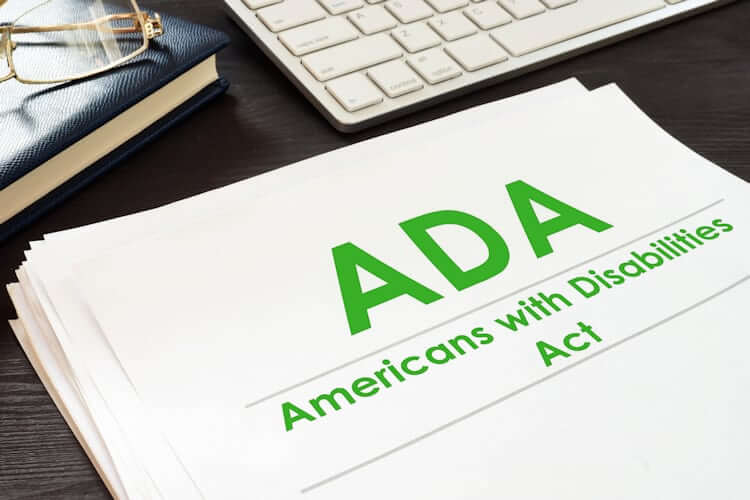What is the ADA?
For those of you who don’t know, the “ADA” refers to the Americans with Disabilities Act, an act which became law in 1990. The ADA is a civil rights law that prohibits discrimination against individuals with disabilities in public life. This protection extends to jobs, schools, transportation, and all private and public places that are open to the general public.
Why are We Writing about it Here?
It’s simple: the courts have ruled that websites are covered by the ADA. Lawsuits targeting websites and mobile apps for allegedly failing to comply with the Americans with Disabilities Act (ADA) rose nearly 200% in 2018. The lawsuits focus on Title III of the ADA, which prohibits “places of public accommodation” from discriminating against persons with physical and other disabilities on the basis of those disabilities. A majority of federal courts and the Department of Justice (DOJ) consider consumer-facing websites to constitute “places of public accommodation”.
What Does this Mean for Your Dealership?
Quite frankly, it’s not entirely clear. While courts have ruled that websites are covered by the ADA, there are no clear legal standards for website compliance with the law. However, a conservative reading of trends and the law would argue in favor of you making attempts to make your website accessible to all visitors.
What is true right now is that the rise in website ADA claims has prodded many dealers to attempt to make their websites ADA compliant. But, as indicated above, that effort has been stymied by the lack of a definitive legal standard for compliance. Under the Obama administration, the DOJ had proposed support for the World Wide Web Consortium’s Web Content Accessibility Guidelines 2.0 Level AA Guidelines (WCAG 2.0 AA) as the minimum standard for website accessibility. However, under the current administration, the DOJ has changed course by stating that websites “have flexibility in how to comply with the ADA[.]” They continued, “[N]oncompliance with a voluntary technical standard for website accessibility does not necessarily indicate noncompliance with the ADA.”
So What Do You Do?
Be smart and be conservative. Despite the uncertainty as to whether WCAG 2.0 AA is the official legal standard for website accessibility, courts consistently look to it as a benchmark. Consequently, we suggest that dealers aim for WCAG 2.0 AA to ensure that the risk of a lawsuit is minimized.
WCAG 2.0 AA requires, among other things, that websites provide:
- Captions for audio and video content.
- Machine-readable text and audio descriptions for onscreen content. This includes having good ALT attributes for images.
- Operability entirely through a keyboard.
- Minimum contrast ratios for text and images.
- The ability to change background colors, font colors and font sizes.
How to Make Your Website WCAG 2.0 AA Compliant Without a Complete Overhaul
There are some very quick things that we can do with your site to make it compliant or at least put it on track to compliance.
- Run the site through an ADA audit tool such as Google Pagespeed Insights. The tool has an “Accessibility” section that, when selected, will give you the issues that will need to be addressed.
- Using the tool, address most critical issues first such as ones with contrast, keyboard operability, and video and audio captions.
- Put the UserWay.org WCAG 2.1 AA widget on your website to cover most ADA compliance issues
If you are one of our dealers, we will be contacting you over the next few months to get this process going for your website. If you are not a customer, feel free to contact us if you have any questions. We’d love to hear from you!
—-
Please note that this document is informative and should not be considered to have any legal authority. With that said, if you want a more legal opinion, please visit this website and the ADA National Network’s site.
